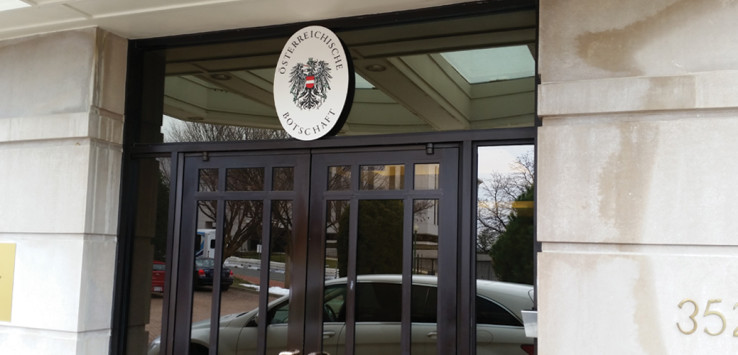
After having a hard time trying to contact the Austrian Embassy to discuss our options, we decided to make an appointment instead. Fortunately, we live a short 15 minutes away from the Austrian Embassy in Washington DC, so an in-person appointment to answer our MANY questions made the most sense. (If you cannot meet in person, ask for the Consular Officer when you call or you can email them directly.) Once we arrived, we met with the Consular officer and she asked us to submit our visa application and papers. Being the prepared individuals that we are, we brought our Visa D Application (Visa that allows up to 6 months) loosely filled out to show that we put some effort into our visit. The lady we met with didn’t seem too impressed at first, but after we talked and we explained how passionate we are about her home country, she did open up a little.
3 Things we gathered from our visit to the Austrian Embassy:

For additional requirements for a Residence Permit visit: http://www.austria.org/residence
2) You can travel throughout any Schengen countries (including Austria) for 90 cumulative days within a 180 period without any Visa. (Not all countries are exempt from this, so make sure you double check before departure.) After those three months, we would have to either come back to America, or to any country outside of the Schengen area for another three months before we could go back to the EU again. The problem with this option is we plan to stay in Austria for 2 years, so this whole bouncing back and forth kinda thing would definitely get old. Fast. And it may not be the safest route, since I am sure authorities would catch on eventually.
3) If you have a host or sponsor, you can apply for an Austrian National Visa (Visa D). A Visa D allows you to stay in Austria for up to 6 months. You cannot legally work in Austria, so you need to show your bank accounts have enough money to survive (about $1,000 per month per person). After some deeper questioning, we also found out that after your Visa D expires, you’re 90 day Travel Visa kicks in, which means 9 whole months of freedom and travel! Also, that leaves us some time to apply for another Visa D or a residence permit. Visa D is definitely where it’s at, especially for our situation.
For additional requirements and details for Visa D in Austria, visit: http://www.austria.org/visa
Now that our new Austrian friend opened up, we were hoping she would invite us over for some Knödel Soup, but I guess we weren’t at that level yet… Maybe when we come back in April to apply for our Visa D (3 months before travel), she will welcome us like the fellow Austrians we hope to be!





